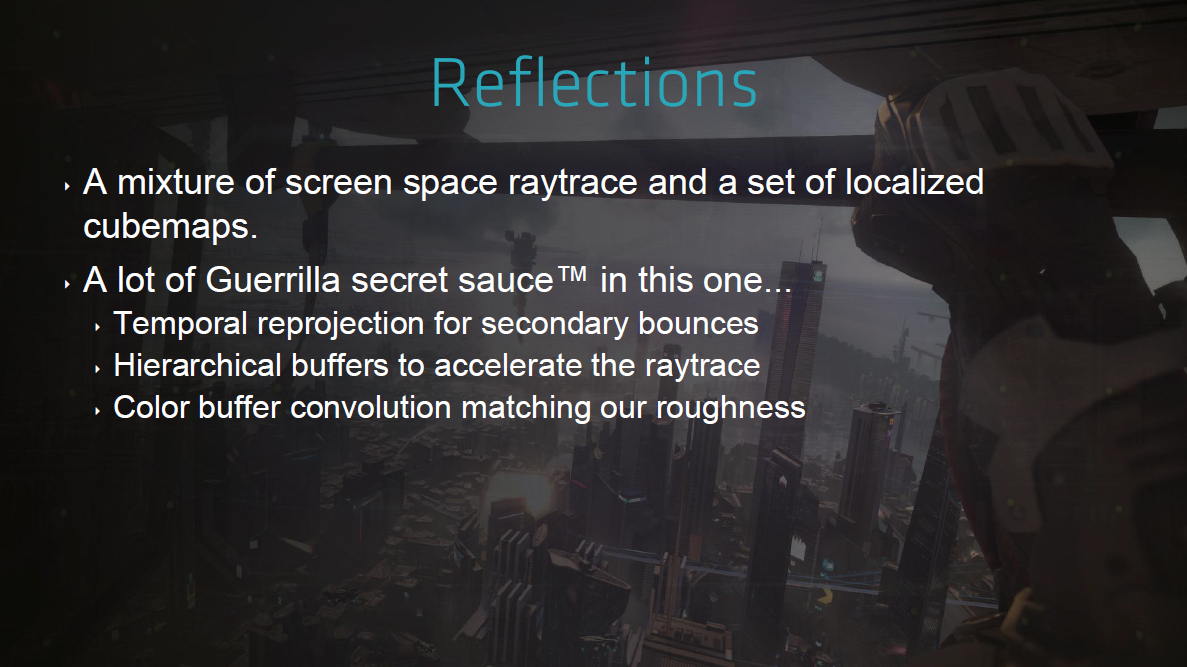I wonder if the lighting on that is baked.
The slide says that all the lights are area lights.

I wonder if the lighting on that is baked.

Diminishing returns
Anyways, so the game is using 4.5GB not the 3GB GAF is crowing about. That's equivalent to like a 5.5GB console after OS reserves, so maybe PS4 doesn't just have that wildly much more RAM headroom than it sounds initially when you think "3GB, 8GB"
Btw., from the profiler output one can also deduce that the devkit's CPU was definitely running at 1.6 GHz. And KZ4 apparently uses just 6 threads.
Our approach on PS4 is similar to what we did to PS3.
We’re using our own job scheduler to distribute the load over 6 CPU’s.
A lot of the old SPU jobs easily fell into place, but it was mostly the rendering code.
We spent most of the time porting gamecode and AI to jobs and then a lot of time fixing crashes.
As of now all of our code now runs in parallel using jobs.
Anyways, so the game is using 4.5GB not the 3GB GAF is crowing about. That's equivalent to like a 5.5GB console after OS reserves, so maybe PS4 doesn't just have that wildly much more RAM headroom than it sounds initially when you think "3GB, 8GB"
Rangers said:Diminishing returns
Diminishing returns
Here some examples of the asset detail changes.
As you can see, the additional detail gives rather incremental quality improvement, the main changes lie in the variety of materials, the lighting model and all the other engine changes.

The Durango "secret sauce" meme/term reached all the way to Guerrilla...
Too bad they didn't talk about the audio h/w given that audio data occupies the largest chunk in system memory.
Wondering what they do with the remaining 2 CPU cores.
Kate Upton has a mole? Never noticed. Her portly waist-hip area is kind of distracting though
Can you explain more?
Too bad they didn't talk about the audio h/w given that audio data occupies the largest chunk in system memory.
Wondering what they do with the remaining 2 CPU cores.
“Animation networking quality was much higher, I think it’s just basically been proven that the amount of time it takes AI programmers to get their code up and running in parallel is so much easier that it just enables us to do much more. Of course we were optimising towards 30fps, making sure we didn’t drop a frame – or that we dropped a few frames but not very many – basically just making sure it ran smooth. And this is a launch title, we’ve just got new hardware and we weren’t using some of the hardware acceleration for stuff like audio at the time we did the demo, which we have now done. So I think there’s a lot more left in the system.”
Kate Upton has a mole? Never noticed. Her portly waist-hip area is kind of distracting though
Portly? Wtf
